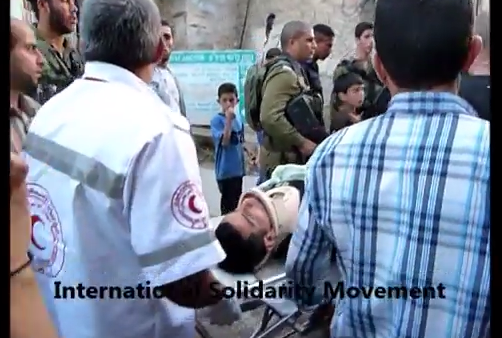Tag: Settler violence
-
VIDEO: Settler runs over a 17-year-old Palestinian in Hebron
22nd May 2014 | International Solidarity Movement, Khalil team | Hebron, Occupied Palestine Yesterday during the early evening, several Palestinian youths were riding bikes near checkpoint 56 in the Tel Rumeida area of Al-Khalil (Hebron). At around 7pm, one youth, 17-year-old Izz Adel Bedo, from the Jabal Al-Takruri area of Hebron was knocked off his bike and…
-
Settler shoots Palestinian as he tries to repair his car
9th April 2014 | International Solidarity Movement, Nablus Team | Urif, Occupied Palestine On Sunday 30th March on the road to Madama (near Nablus), 25-year-old Nidal, from the village of Urif, was fixing his car when a settler with a handgun shot him in the leg. 12 years ago, in the same area, Nidal and two…
-
Armed settlers occupy village land in Hebron
14th March 2014 | International Solidarity Movement, Team Khalil | Arab ar Rashyaida, Occupied Palestine On Tuesday 11th March 2014 villagers from Arab ar Rashyaida, 15 kilometers (10 miles) west of Hebron, noticed that a large tent and industrial digger had moved onto a hill top on a villagers land. ISM Hebron was called and accompanied…



